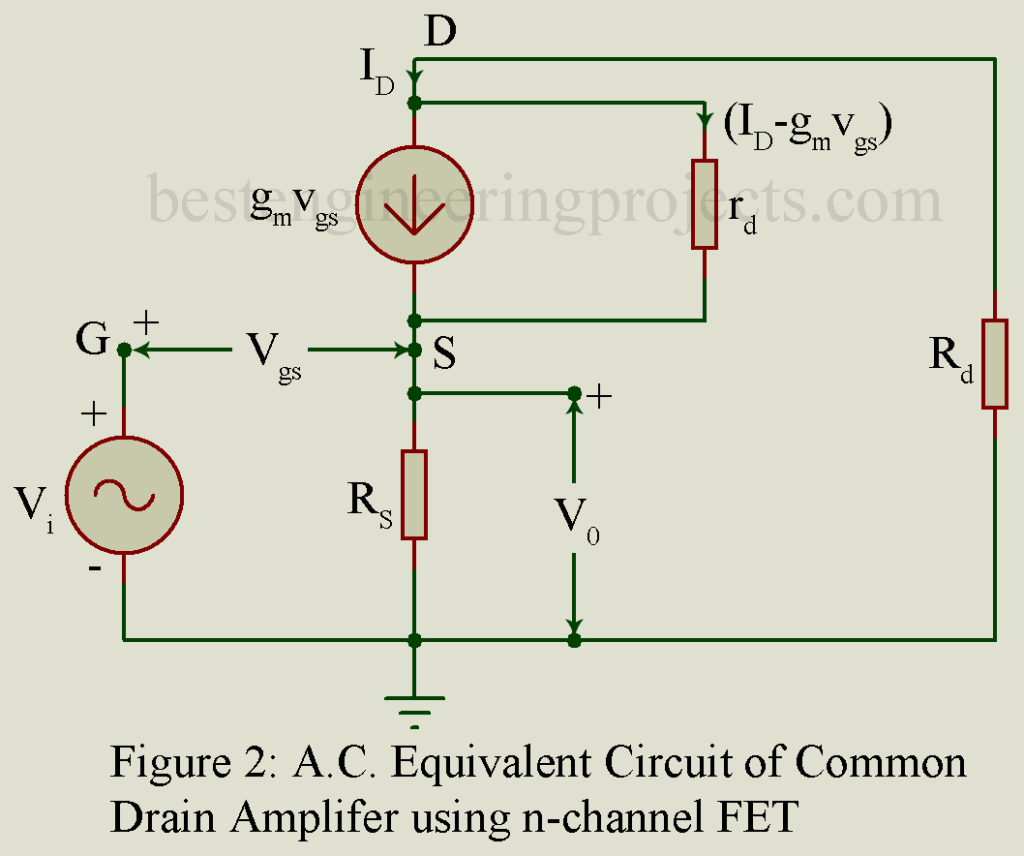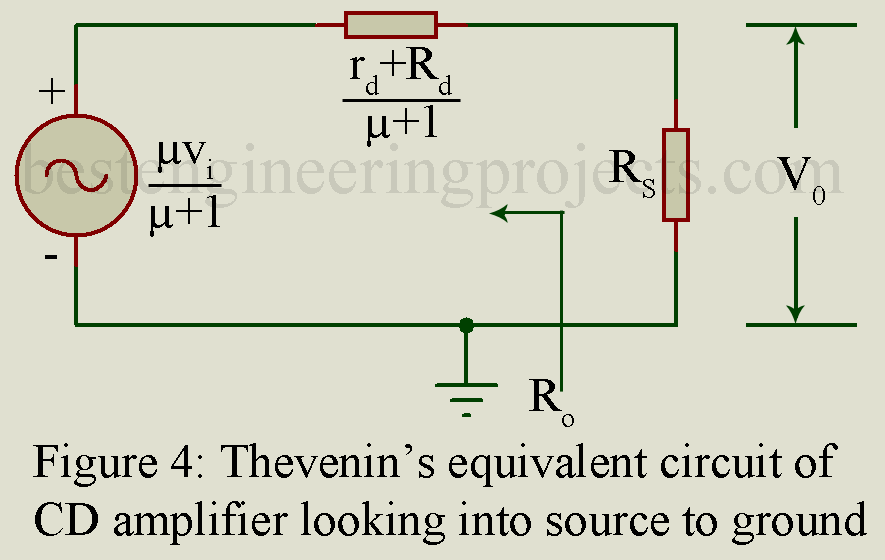Common Drain Amplifier Introduction
In the common drain amplifier, the input signal is applied between the gate and drain and the amplified output voltage is developed across a resistor in the source-to-drain circuit. The drain is the terminal common to the input and the output sides.
Figure 1 gives the circuit of one stage of a common drain amplifier (CD) using n-channel FET. Rs is the load impedance placed in the source circuit. Quite often a resistor Rd is placed in the drain circuit to further stabilize the operation of the amplifier. However, the use of the same is not essential. This circuit is analogous to the common collector (CC) amplifier. On using p-channel FET, the polarity of the supply voltage is reversed.

Analysis of Common Drain Amplifier (CD)
Resistor R provides the self-bias also. No gate current follows. Hence, the input impedance is infinity. The analysis given here applies to both the n-channel and p-channel Common drain amplifiers. Figure 2 gives the small signal low-frequency equivalent circuit. Here FET has been replaced by its small signal low-frequency model of figure 3.
On applying KVL to the output circuit we get,
…….(1)
But from the figure 2,
……..(2)
On substituting the value of Vgs from equation 2 into equation 1 and rearranging we get,
Hence,
……..(3)
Hence output voltage,
…….(4)
Hence voltage gain,
…….(5)
Evidently, the output voltage Vo is in phase with the input voltage Vi. But the voltage gain is always less than one.
Equation 4 may be put as, ………(6)
Figure 4 gives the equivalent circuit, called Thevenin’s equivalent circuit, looking from the load resistor Rs into the source S to ground N. This circuit is obtained from equation (6).
From figure 4, the output impedance Ro is given by,
……..(7)
With Rd = 0 In case of Rd is omitted, we get,
………(8)
Hence,
…….(9)
Also, voltage gain,
………(10)
If >>
, then
……..(11)
Numerical Example of Common Drain Amplifier
Example 1: A common drain amplifier uses FET having dynamic drain resistance rd = 200 k-ohm and = 20. Calculate the output impedance and voltage gain for the following values of load resistor Rs : (i) 200
(ii) 400
(iii) 600
.
Solution:
;
Given:
;
,
- For
:
- For
:
- For
:
Example 2: A common drain amplifier uses FET having and dynamic drain resistance
. A resistor
is placed in the drain circuit. Calculate the voltage gain Av and the output resistance R0 for the following values of load resistor Rs in the source circuit: (i)
(ii)
(iii)
Solution:
Voltage gain
- For
,
- For
,
- For
,
Tutorial Problem 1 (a) Draw the circuit of a common drain amplifier with a resistor Rd in the drain circuit. Draw its small signal equivalent circuit and drive expression for the voltage gain Av and the output resistance Ro. (b) A common drain amplifier uses FET having and
. The load resistance
. A resistor Rd is placed in the drain circuit. Calculate the voltage gain Av and output resistance Ro for the following values of Rd:
(i) (ii)
and (iii)
[Ans: AV = 0.917; 0.912; 0.906, ]


